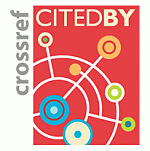Sustainable growth of EU economies and Baltic context: Characteristics and modelling
Vol. 10, No 1, 2017
|
Girts Karnitis
Faculty of Computing, University of Latvia
|
Sustainable growth of EU economies and Baltic context: Characteristics and modelling
|
|
Edvins Karnitis
Faculty of Computing, University of Latvia
|
Abstract. The united general growth strategy for all EU Member States, a common economic and political vision as well as location in the same geographic region provides a necessary basis for the benchmarking modelling of economies. The main objective of this study is determination of the functional regularities and drivers of the growth of EU economies and the context of the Baltic States in line with the general trend of the EU, as well as development of the growth model, which can be used for sustainable planning and prediction. Analysis of several regularly published analytical indexes suggests a thesis on innovation as the real basic driving force for EU economies and outlines Innovation Performance Index, which have a very strong compliance with the economic growth of particular country. At the same time study of the data set and methodology of the Index indicates space for further optimization. By use of several linear regression tools the growth model was created. It is based on three hard independent statistical indicators (predictors) only; of course, these indicators is a peak of a complex pyramid. Despite of the simplicity of the model, the long-term correlation of fitted values with the real GDP per capita is extremely strong 0.961 – 0.987). |
|
Received: December, 2016 1st Revision: February, 2017 Accepted: April, 2017 |
|
|
DOI: 10.14254/2071-8330.2017/10-1/15
|
|
|
JEL Classification: Z13 |
Keywords: economic indicators, gross domestic product, economics planning, innovation, data analysis, mathematical models |









